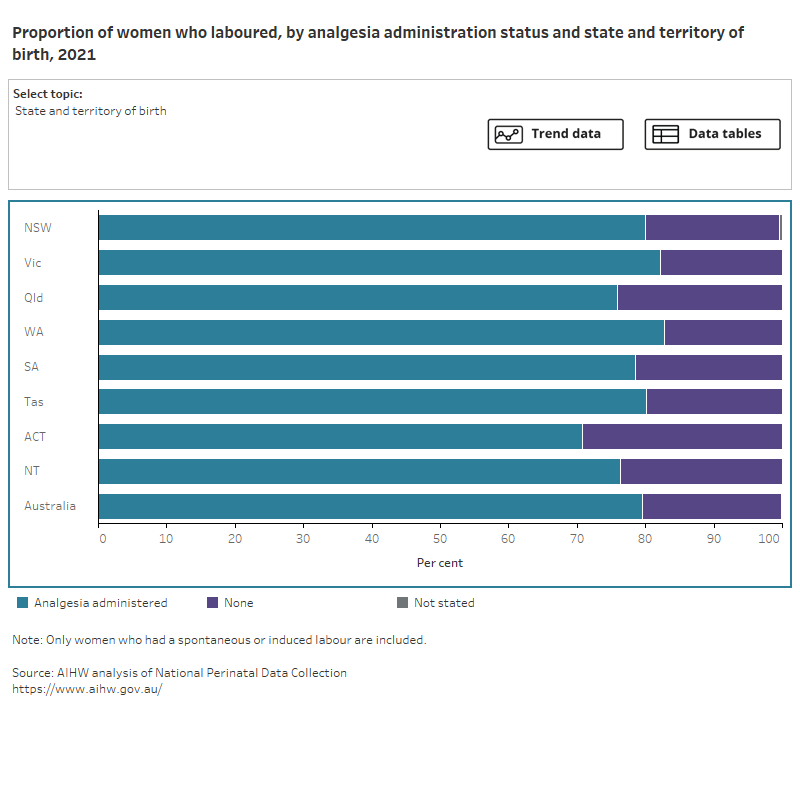Analgesia
Analgesia is used to relieve pain during labour. Data are therefore limited to mothers who had labour, whether spontaneous or induced (note that some mothers who labour may go on to have a caesarean section and receive anaesthesia rather than analgesia). More than one type of analgesic can be administered.
The data visualisation (Figure 1) presents data on the analgesia administration status of women who laboured, by selected maternal characteristics, for 2021. Select the trend button to see how data has changed over an 11-year period (where available).
Figure 1: Proportion of women who laboured, by analgesia administration status and selected topic
Bar chart shows analgesia administration status by selected topics and a line graph shows topic trends between 2011 and 2021.

Around 4 in 5 (80%) women who had labour in Australia received pain relief. In 2021, the most common types were nitrous oxide (inhaled) (52%), followed by epidural or caudal analgesic (42%) and systemic opioids (11%).
More than 9 in 10 women who had an instrumental vaginal birth received pain relief (97% for vaginal births assisted with forceps and 93% for vaginal births assisted with vacuum extraction). Additionally, women who gave birth in a private hospital were more likely to receive pain relief (85%) than women who gave birth in a public hospital (81%).
Compared with mothers who had pain relief, mothers who did not have pain relief were more likely to:
- be aged 40 or more (25%)
- have given birth before (from 25% for mothers with one previous pregnancy to 38% for mothers with 4 or more previous pregnancies)
- be First Nations (22%).
For more information on analgesia see National Perinatal Data Collection annual update data tables 2.29 and 2.30.


